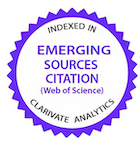Uso do Alphitobius diaperinus como método alternativo de osteotécnica
DOI:
https://doi.org/10.1590/1809-6891v24e-75530EResumo
Buscou-se com o presente estudo desenvolver um método alternativo de osteotécnica biológica baseado no uso de cascudinhos (Alphitobius diaperinus), um inseto de comportamento necrófago encontrado nos sistemas de produção avícola. Foram utilizados dez cadáveres de animais de pequeno a médio porte e de diferentes espécies, e duas peças ósseas isoladas. Após a retirada dos tecidos moles, os ossos foram acomodados junto aos insetos até a sua limpeza completa. Na sequência, as peças foram avaliadas, clareadas, secas e os esqueletos montados. A utilização dos cascudinhos na preparação biológica de esqueletos demonstrou resultados bastantes promissores, visto que este inseto é de fácil aquisição, manutenção e manipulação, não emite odores desagradáveis ao ambiente, proporciona uma limpeza completa dos esqueletos, atingindo lugares de difícil acesso. Além disso, apresentam grande agilidade na limpeza das carcaças, sendo dispensável a fixação prévia dos tecidos moles para prevenir a putrefação ou o aparecimento de microrganismos, como colônias de fungos.
Palavras-chave: maceração; besouros; esqueletos
Downloads
Referências
Hildebrand M, Goslow JR. Análise da estrutura dos vertebrados. 2ª ed. São Paulo: Atheneu; 2006.
Silveira MJ, Teixeira GM, Oliveira EF. Análise de processos alternativos na preparação de esqueletos para uso didático. Acta Scientiarum Biological Sciences. 2008;30(4):465-72. Available from: https://doi.org/10.4025/actascibiolsci.v30i4.5876.
Muñoz‐Saba Y, Sánchez‐Nivicela JC, Sierra‐Durán CM, Vieda‐Ortega JC, Amat‐García G, Munoz R, Casallas‐Pabón D, Calvo‐Roa N. Cleaning osteological specimens with beetles of the genus Dermestes linnaeus, 1758 (Coleoptera: Dermestidae). Journal of Natural Science Collections. 2020;7:72-82. Available from: http://www.natsca.org/article/2584.
Savordelli NC, Pelli A. Dados Preliminares sobre a Tabela de Vida Estática de Dermestes maculatusDeGeer, 1774 em Condições de Laboratório. Brazilian Journal of Forensic Sciences. 2012;1(3):77-83. Available from: https://doi.org/10.17063/bjfs1(3)y201277.
Xavier V. Técnicas de coleta e preparação de vertebrados para fins científicos e didáticos. Phyllomedusa: Journal of Herpetology. 2002;1(2):115-16. Available from: https://www.revistas.usp.br/phyllo/article/download/42596/46265.
Rodrigues ABF, Lima ACQ, Nogueira CHO, Bogossian PM, Rocha VN. Utilização de coleópteros na preparação de material osteológico. PUBVET. 2015;6(3):1277-82. Available from: https://doi.org/10.22256/pubvet.v16n3.1281.
Oliveira MB. Methods of biological maceration in the preparation of bat skulls: benefits and limitations. Papéis Avulsos de Zoologia [Internet]. 2018;58. Available from: https://doi.org/10.11606/1807-0205/2018.58.44.
Trevor AL, Rosemary AK, Steven JR, Justin SB, Myron PZ. Distributions of lesser mealworm (Coleoptera: Tenebrionidae) in litter of a compacted earth floor broiler house in subtropical Queensland, Australia. Journal of Economic Entomology. 2007;100(4):1136-46. Available from: https://doi.org/10.1093/jee/100.4.1136.
Povaluk M. Ciclo e controle do Alphitobius diaperinus (Coleoptera: Tenebrionidae) no Município de Quitandinha, PR. Saúde e meio ambiente. 2017;6(1):107-22. Available from: https://doi.org/10.24302/sma.v6i1.596.
Silva AS, Hoff G, Doyle RL, Santurio JM, Monteiro SG. Ciclo biológico do cascudinho Alphitobius diaperinus em laboratório. Acta Scientiae Veterinariae. 2005;33(2):177-81. Available from: https://doi.org/10.22456/1679-9216.14818.
Uemura DH, Alves LFA, Opazo MAU, Alexandre TM, Oliveira DGP, Ventura MU. Distribuição e dinâmica populacional do cascudinho Alphitobius diaperinus (Coleoptera: Tenebrionidae) em aviários de frango de corte. Arquivos do Instituto Biológico. 2022;75(4):429-35. Available from: https://doi.org/10.1590/1808-1657v75p4292008.
Munaretto LF, Aguiar JT. Análise da viabilidade na implantação de um aviário na região noroeste do estado do Rio Grande do Sul. Revista Metropolitana de Sustentabilidade. 2020;10(1):168. Available from: https://revistaseletronicas.fmu.br/index.php/rms/article/view/1817.
Hefti E, Trechsel U, Rüfenacht H, Fleisch H. Use of dermestid beetles for cleaning bones. Calcified Tissue International. 1980;31(1):45-47. Available from: https://doi.org/10.1007/BF02407166.
Gomes LB, Oliveira ACM. Montagem e manutenção de colônias de besouros do gênero Dermestes (Coleoptera, Dermestidae) Linnaeus, 1758 para preparação de esqueletos usados em coleções biológicas. Boletim da sociedade brasileira de mastozoologia. 2015;73:37-41. Available from: https://www.researchgate.net/publication/299556121.
Do Nascimento DP, Carvalho M. Coleopteras de importância forence: uma revisão de literatura-paraíba. Educação ambiental. 2017;101. Available from: https://abrir.link/7E6CU.
Muñoz-Saba Y, Simmons J. Manejo integrado de plagas. In: Simmons J, Muñoz-Saba Y. Cuidado, Manejo y Conservación de las Colecciones Biológicas. 1st ed. Colombia: Bogotá D.C; 2005. p.162-88. Available from: https://abrir.link/pOaPb.
Neto CAF, Tallarico E, Capriogli MA, Soares VE, Meireles MV, Silva GS. Seasonal variation of Alphitobius diaperinus population in broiler facilities in the center – North Region of the State of São Paulo. Brazilian Journal of Poultry Science. 2006;8(3):183-85. Available from: http://www.redalyc.org/articulo.oa?id=179713991008.
Leeper BJ. Evaluation of current methods of soft tissue removal from bone [dissertation]. Philosophy in Anthropology, Faculty of the Kenneth P. Dietrich School of Arts Sciences (USA): University of Pittsburgh; 2015. Available from: http://d-scholarship.pitt.edu/id/eprint/26725.
Downloads
Publicado
Como Citar
Edição
Seção
Licença
Copyright (c) 2023 Ciência Animal Brasileira / Brazilian Animal Science

Este trabalho está licenciado sob uma licença Creative Commons Attribution 4.0 International License.
Autores que publicam nesta revista concordam com os seguintes termos:
- Autores mantém os direitos autorais e concedem à revista o direito de primeira publicação, com o trabalho simultaneamente licenciado sob a Licença Creative Commons Attribution que permite o compartilhamento do trabalho com reconhecimento da autoria e publicação inicial nesta revista.
- Autores têm autorização para assumir contratos adicionais separadamente, para distribuição não-exclusiva da versão do trabalho publicada nesta revista (ex.: publicar em repositório institucional ou como capítulo de livro), com reconhecimento de autoria e publicação inicial nesta revista.
- Autores têm permissão e são estimulados a publicar e distribuir seu trabalho online (ex.: em repositórios institucionais ou na sua página pessoal) a qualquer ponto antes ou durante o processo editorial, já que isso pode gerar alterações produtivas, bem como aumentar o impacto e a citação do trabalho publicado (Veja O Efeito do Acesso Livre).






























